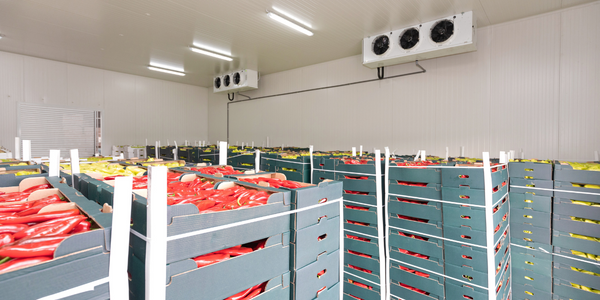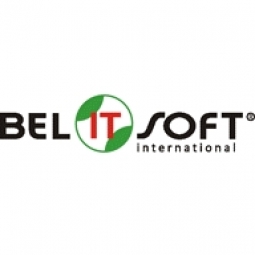Download PDF
Digital Transformation of a Freight Management Company through API Integration

Technology Category
- Functional Applications - Transportation Management Systems (TMS)
- Sensors - GPS
Applicable Industries
- Finance & Insurance
- Transportation
Applicable Functions
- Logistics & Transportation
- Product Research & Development
Use Cases
- Inventory Management
- Public Transportation Management
Services
- System Integration
The Challenge
The client, a US-based freight management company with over 10,000 active carriers, was facing challenges with their legacy ERP system. The system was time-consuming, required a lot of manual work, and was prone to human errors. The company used three different carriers' marketplaces and manually posted new requests from customers on load boards. Agreements for every carrier were created and emailed manually, and a third-party service was used for managing insurance online. The load status and location were tracked using a third-party application, which the customers did not have access to. The company's accountant manually entered all the data necessary for invoicing to the customer and the carrier after getting the information on the delivered freight from a broker. The company owners analyzed the profitability of carriers and customers, as well as brokers' performance by gathering the information from the ERP, the accounting software, and .xls files.
The Customer
US-based freight management company
About The Customer
The client is a US-based freight management company with over 10 years of experience in the market. The company has over 14,000 active carriers in its database and handles large contracts in high-demanding industries of refrigerated, flatbed, dry products, and parcel transportation. The company was ranked as one of the Fastest Growing Companies in the region based on average annual revenue growth. The company stakeholders have been watching digital transformation across the industry and realized the demand for higher agility in transport and logistics operations, essential for providing superior customer service.
The Solution
To increase the efficiency of business processes and avoid human errors, the company decided to replace the ERP with a custom-built Transportation Management System (TMS). The TMS was a web-based solution that allowed brokers to capture every phase of a freight management business cycle. The company also decided to integrate custom APIs with third-party applications to pull data automatically into and out of the TMS. The TMS was integrated with three carrier marketplaces, the carrier onboarding service MyCarrierPackets, a load tracking app, the third-party EFS system, the accounting software QuickBooks, and the AI-platform Hubtran. The TMS also included a Reports tab that allowed the company owners to analyze the profitability of carriers and customers, as well as brokers' performance.
Operational Impact
Quantitative Benefit
Related Case Studies.

Case Study
Airport SCADA Systems Improve Service Levels
Modern airports are one of the busiest environments on Earth and rely on process automation equipment to ensure service operators achieve their KPIs. Increasingly airport SCADA systems are being used to control all aspects of the operation and associated facilities. This is because unplanned system downtime can cost dearly, both in terms of reduced revenues and the associated loss of customer satisfaction due to inevitable travel inconvenience and disruption.

Case Study
IoT-based Fleet Intelligence Innovation
Speed to market is precious for DRVR, a rapidly growing start-up company. With a business model dependent on reliable mobile data, managers were spending their lives trying to negotiate data roaming deals with mobile network operators in different countries. And, even then, service quality was a constant concern.

Case Study
Digitize Railway with Deutsche Bahn
To reduce maintenance costs and delay-causing failures for Deutsche Bahn. They need manual measurements by a position measurement system based on custom-made MEMS sensor clusters, which allow autonomous and continuous monitoring with wireless data transmission and long battery. They were looking for data pre-processing solution in the sensor and machine learning algorithms in the cloud so as to detect critical wear.

Case Study
Cold Chain Transportation and Refrigerated Fleet Management System
1) Create a digital connected transportation solution to retrofit cold chain trailers with real-time tracking and controls. 2) Prevent multi-million dollar losses due to theft or spoilage. 3) Deliver a digital chain-of-custody solution for door to door load monitoring and security. 4) Provide a trusted multi-fleet solution in a single application with granular data and access controls.

Case Study
Vehicle Fleet Analytics
Organizations frequently implement a maintenance strategy for their fleets of vehicles using a combination of time and usage based maintenance schedules. While effective as a whole, time and usage based schedules do not take into account driving patterns, environmental factors, and sensors currently deployed within the vehicle measuring crank voltage, ignition voltage, and acceleration, all of which have a significant influence on the overall health of the vehicle.In a typical fleet, a large percentage of road calls are related to electrical failure, with battery failure being a common cause. Battery failures result in unmet service agreement levels and costly re-adjustment of scheduled to provide replacement vehicles. To reduce the impact of unplanned maintenance, the transportation logistics company was interested in a trial of C3 Vehicle Fleet Analytics.

Case Study
3M Gains Real-Time Insight with Cloud Solution
The company has a long track record of innovative technology solutions. For example, 3M helps its customers optimize parking operations by automating fee collection and other processes. To improve support for this rapidly expanding segment, 3M needed to automate its own data collection and reporting. The company had recently purchased the assets of parking, tolling, and automatic license plate reader businesses, and required better insight into these acquisitions. Chad Reed, Global Business Manager for 3M Parking Systems, says, “With thousands of installations across the world, we couldn’t keep track of our software and hardware deployments, which made it difficult to understand our market penetration.” 3M wanted a tracking application that sales staff could use to get real-time information about the type and location of 3M products in parking lots and garages. So that it could be used on-site with potential customers, the solution would have to provide access to data anytime, anywhere, and from an array of mobile devices. Jason Fox, Mobile Application Architect at 3M, upped the ante by volunteering to deliver the new app in one weekend. For Fox and his team, these requirements meant turning to the cloud instead of an on-premises datacenter. “My first thought was to go directly to the cloud because we needed to provide access not only to our salespeople, but to resellers who didn’t have access to our internal network,” says Fox. “The cloud just seemed like a logical choice.”





